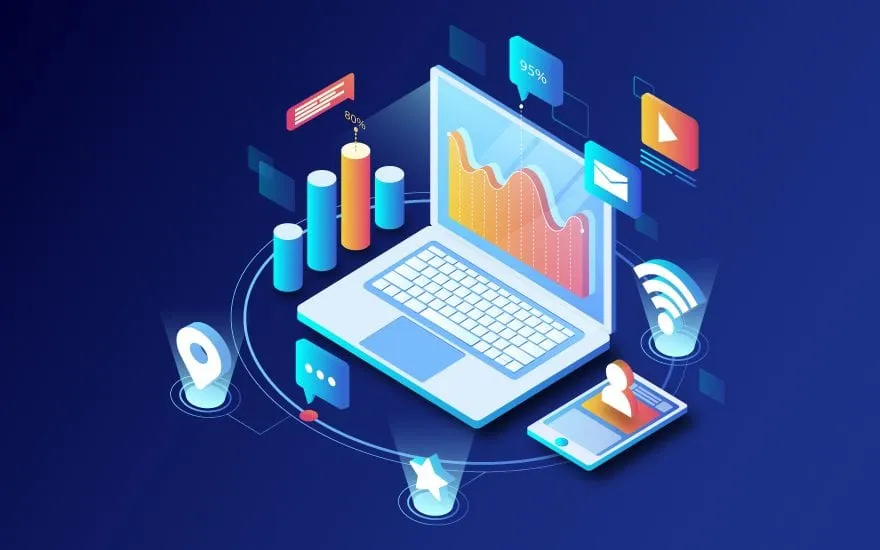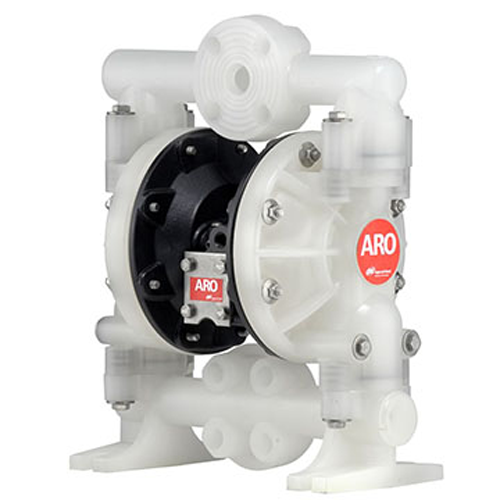You hear the term everywhere: “the cloud.” Businesses are migrating to it, new applications are built on it, and it powers many of the services we use daily, from email and streaming to online banking and social media. But what is cloud computing, really? For many, it remains a somewhat abstract concept, a magical place where data lives and applications run without the need for physical hardware sitting in their office or home. In essence, Cloud Computing is a revolutionary approach to delivering computing services over the internet. It’s about accessing computing resources—like servers, storage, databases, networking, software, analytics, and intelligence—on demand, much like you access electricity or water from a utility company. Instead of owning, managing, and maintaining physical IT infrastructure, you consume these resources as a service from a third-party provider. This fundamental shift has transformed how businesses operate and individuals interact with technology, offering unprecedented flexibility, scalability, and efficiency. Understanding what is cloud computing is key to navigating the modern digital landscape, whether you’re an individual user, a small business owner, or an IT professional evaluating infrastructure options. The concept is often referred to as in Vietnamese, literally translating to “cloud computing,” emphasizing the distributed and virtual nature of the resources involved. Let’s break down this powerful technology to truly grasp what is cloud computing and why it matters so much today.
Toc
Defining Cloud Computing: More Than Just Storing Data Remotely

To fully understand what is cloud computing, we must move beyond the simple idea of storing files online. While online storage is a type of cloud service, it’s only one small part of a much larger picture. Cloud Computing is a model for enabling ubiquitous, convenient, on-demand network access to a shared pool of configurable computing resources that can be rapidly 1 provisioned and released with minimal management effort or service provider interaction. This 2 is a standard definition, but let’s break it down into more digestible components to answer the question, “What is Cloud Computing?”
The Core Concept: On-Demand Access to Computing Resources
At its most basic level, Cloud Computing is about accessing computing power, storage, and applications as a utility. Think about how you get electricity – you plug into the grid, use what you need, and pay for your consumption. You don’t own the power plant or the transmission lines. Similarly, with Cloud Computing, you connect to the provider’s infrastructure over the internet, access the computing resources you require (whether it’s processing power to run an application, storage space for data, or a specific software application itself), and typically pay only for the resources you actually consume. This on-demand nature means you can quickly scale resources up or down as your needs change, without the lengthy procurement processes and significant upfront investments associated with buying physical hardware. The “cloud” metaphor comes from the early diagrams of the internet, where the network was often depicted as a cloud, representing the hidden complexity of the underlying infrastructure. So, at its core, what is cloud computing? It’s accessing computing resources as a flexible, metered service over the internet. The Vietnamese term perfectly captures this idea of utilizing computing power from a remote, abstract “cloud” of resources.
The Five Essential Characteristics of True Cloud Computing

To truly qualify as Cloud Computing, a service model should exhibit certain characteristics. The National Institute of Standards and Technology (NIST) provides a widely accepted definition based on five essential traits. Understanding these traits is crucial for fully answering “what is cloud computing?”.
- On-demand self-service: As mentioned, users can provision computing capabilities (like server time or network storage) automatically and on demand, without needing human interaction with the service provider. This empowers users to quickly deploy resources as needed.
- Broad network access: Cloud capabilities are available over the network and can be accessed using standard client platforms (e.g., laptops, mobile phones) from virtually anywhere with an internet connection.
- Resource pooling: The provider’s computing resources are pooled together to serve multiple users using a multi-tenant model. Different users share the same physical resources, but their data and applications are kept logically separate. Resources (storage, processing, memory, bandwidth) are dynamically assigned and reassigned based on demand, leading to efficient utilization of the underlying cloud infrastructure.
- Rapid elasticity: Capabilities can be rapidly scaled up or down to meet fluctuating demand, often automatically. To the user, the available resources appear virtually unlimited. This is invaluable for handling unpredictable workloads.
- Measured service: Cloud systems automatically monitor and optimize resource usage using a metering capability. This allows resource consumption to be tracked, controlled, and reported transparently, forming the basis for the pay-per-use pricing model. This measurement capability is fundamental to the economic benefits of cloud computing.
These five characteristics collectively define the unique operational model and capabilities that distinguish true Cloud Computing from other forms of internet-based services or traditional hosting. They are essential components when trying to understand what is cloud computing.
The Evolution from Traditional IT to the Cloud Model

To appreciate what is cloud computing, it helps to contrast it with the traditional approach to IT infrastructure. In a traditional model, organizations typically owned and managed all their IT resources on-premises: buying servers, storage devices, networking equipment, installing operating systems and software, maintaining data centers with cooling and power, and employing IT staff to manage everything. This required significant upfront capital expenditure (CapEx), lengthy procurement and deployment cycles, and often resulted in underutilized resources (infrastructure was bought for peak load but idle during off-peak times).
The shift to Cloud Computing changes this paradigm dramatically. Instead of CapEx, the model shifts to operational expenditure (OpEx), paying for resources as they are consumed. The burden of managing the physical cloud infrastructure, maintaining software updates, ensuring security of the underlying hardware, and handling scalability falls primarily on the cloud provider. This allows organizations to move faster, experiment more readily, and focus their IT staff on strategic initiatives rather than routine maintenance. This evolution from owning and managing physical assets to accessing virtual resources over the internet is a key aspect of understanding what is cloud computing and its disruptive potential. The development of virtualization technology was a crucial enabler of this transition, allowing multiple virtual instances to run independently on a single piece of physical hardware.
Exploring the Different Forms and Offerings of Cloud Computing
Cloud Computing isn’t a one-size-fits-all technology. It comes in various forms, categorized primarily by the level of service provided and how the underlying infrastructure is deployed and managed. Understanding these different models is essential for grasping the full scope of “what is cloud computing?”.
Cloud Service Models: Understanding What You Get

Cloud providers offer different cloud services models, giving users flexibility in how much of the IT stack they want the provider to manage versus how much they want to manage themselves. These models build upon each other, offering increasing levels of abstraction. These are often referred to as the “stack” of cloud services.
- Infrastructure as a Service (IaaS): This is the most basic category of cloud services. IaaS provides the fundamental building blocks of IT infrastructure over the internet: virtual machines (servers), storage (block, file, object), networking (virtual networks, load balancers), and operating systems. The cloud provider manages the physical infrastructure (servers, data centers, networking, storage), while the user manages the operating system, applications, and data. Think of it like renting empty server racks in a data center, but accessed virtually. IaaS offers the highest level of flexibility and control, making it suitable for migrating existing applications or running custom software.
- Platform as a Service (PaaS): PaaS builds on IaaS by providing a platform and environment for developers to build, test, deploy, and manage applications. PaaS includes the underlying hardware and operating system (managed by the provider), plus middleware, development tools, database management systems, and business intelligence services. The user manages the applications and data, while the provider manages the infrastructure and the platform software. This model accelerates application development by abstracting away the complexity of managing the development environment.
- Software as a Service (SaaS): This is the most complete form of cloud services, delivering fully functional software applications over the internet on a subscription basis. The cloud provider manages the entire IT stack—from the underlying infrastructure (IaaS) to the operating system, platform software (PaaS), and the application itself. Users simply access the application through a web browser or a client interface. Examples include online email services, customer relationship management (CRM) software, and online productivity suites. SaaS offers ease of use and requires minimal IT management from the user, focusing purely on consuming the application.
These cloud services models represent different layers of responsibility in the Cloud Computing stack, allowing users to choose the level of management they are comfortable with, from managing almost everything above the hardware (IaaS) to managing just their user accounts (SaaS). Understanding these distinctions is key to answering “what is cloud computing” in terms of what it offers users.
Cloud Deployment Models: Where the Cloud Resides
Beyond the type of service, Cloud Computing can also be deployed in different environments, defining where the underlying cloud infrastructure is physically located and who manages it. These are the primary cloud deployment models.
- Public Cloud: In a public cloud, services are delivered over the public internet by a third-party provider (like Amazon Web Services, Microsoft Azure, Google Cloud Platform). The provider owns and manages all the hardware, software, and supporting infrastructure. Resources are shared among multiple customers using a multi-tenant architecture. Public clouds offer massive scalability, high reliability, and cost-effectiveness, making them ideal for a wide range of workloads.
- Private Cloud: A private cloud is infrastructure dedicated exclusively to a single organization. It can be physically located on the company’s own data center premises or hosted by a third-party service provider on a private network. The key is that the infrastructure and services are not shared with other organizations. Private clouds offer greater control over data, enhanced security, and the ability to customize the environment to specific needs, often favored by highly regulated industries.
- Hybrid Cloud: A hybrid cloud environment combines elements of both public and private clouds. It allows data and applications to be shared or moved between public and private environments. This model offers flexibility, allowing organizations to keep sensitive workloads or data on a private cloud while leveraging the scalability and cost-effectiveness of the public cloud for less sensitive applications or variable workloads.
- Multi-Cloud: While sometimes confused with hybrid cloud, a multi-cloud strategy involves using cloud services from multiple public cloud providers (e.g., using AWS for storage, Azure for virtual machines, and Google Cloud for analytics) simultaneously. This approach helps avoid vendor lock-in and allows organizations to choose the best-of-breed services from different providers.
These cloud deployment models offer organizations flexibility in how they structure their Cloud Computing strategy, balancing factors like cost, security, control, and existing infrastructure when deciding “what is cloud computing” best suited for their specific context.
The Underlying Technology: How Cloud Computing Works
While users experience Cloud Computing as accessing virtual resources over the internet, it relies on sophisticated underlying technology and physical cloud infrastructure. The key enabler is virtualization. Virtualization technology allows a single physical server (or other hardware resource) to be divided into multiple virtual instances. Each virtual instance acts like an independent computer with its own operating system, applications, and resources, even though it’s sharing the underlying physical hardware. This process allows cloud providers to maximize the utilization of their physical infrastructure and rapidly provision or de-provision resources for users without manually setting up new hardware every time.
These physical resources (servers, storage, networking) are housed in massive, secure data centers managed by the cloud provider. These data centers are equipped with redundant power, cooling, networking, and stringent physical security measures. The provider’s software manages the virtualization layer, the allocation of resources from the pooled infrastructure, monitoring usage, and delivering the various cloud services (IaaS, PaaS, SaaS) to users over the internet. Understanding this underlying layer helps demystify what is cloud computing by showing it’s built on real physical infrastructure, albeit managed and abstracted away from the user.
Why Cloud Computing Matters: Benefits, Use Cases, and Adoption Drivers
Now that we’ve clarified “what is cloud computing” and explored its different forms, let’s look at why it has become so pervasive and transformative. The widespread adoption is driven by compelling advantages for businesses and individuals alike. The numerous benefits of cloud computing are revolutionizing how technology is used and deployed globally.
Key Benefits: Unlocking Efficiency, Scalability, and Cost Savings
The move to Cloud Computing is powered by significant practical benefits of cloud computing that address key challenges of traditional IT:
- Cost Savings: Moving to the cloud can drastically reduce upfront capital expenditures (CapEx) on hardware and infrastructure. The pay-as-you-go model (OpEx) means you only pay for the resources you actually consume, potentially leading to lower overall costs, especially for variable workloads. Reduced IT management overhead (maintenance, updates, patching) also contributes to savings.
- Scalability and Elasticity: One of the most powerful benefits of cloud computing is the ability to quickly scale resources up or down to match demand. If your website traffic suddenly spikes, you can instantly add more server capacity. If demand drops, you can scale back down, paying only for what you need. This rapid elasticity allows businesses to adapt quickly to changing circumstances.
- Reliability and Availability: Cloud providers invest heavily in redundant infrastructure, distributing data and applications across multiple data centers and regions. This provides high availability and robust disaster recovery capabilities, ensuring your applications and data remain accessible even if a disaster strikes one location.
- Flexibility and Agility: Cloud Computing offers immense flexibility. You can quickly deploy new applications, experiment with new technologies, and access resources from virtually any internet-connected device. This agility accelerates innovation and speeds up time-to-market for new products and services.
- Maintenance and Updates: The cloud provider is responsible for maintaining the underlying cloud infrastructure, including hardware repairs, security patching, and software updates (depending on the service model). This frees up your IT staff to focus on more strategic tasks.
- Security: While security is a shared responsibility, major cloud providers offer advanced security measures, certifications, and expertise that can often exceed the capabilities of individual organizations. They provide physical security for data centers and robust network-level security.
These compelling benefits of cloud computing make it a strategic choice for businesses of all sizes, driving digital transformation and enabling new operational efficiencies. They are a direct consequence of the core operational model defined by “what is cloud computing?”.
Common Use Cases: What Cloud Computing Enables
Knowing “what is cloud computing” involves understanding how it’s being used in practice. The applications of cloud technology are vast and continue to grow. Here are some common cloud computing use cases:
- Data Storage, Backup, and Disaster Recovery: Storing data securely in the cloud, creating automated backups, and setting up disaster recovery sites in different geographic regions are fundamental cloud uses, offering reliability and cost-effectiveness compared to traditional methods.
- Running Web Applications and Mobile Backends: The cloud provides the scalable infrastructure needed to host websites, web applications, and the backend services for mobile apps, handling fluctuating user traffic efficiently.
- Enterprise Applications: Migrating large, complex business applications like ERP (Enterprise Resource Planning) and CRM (Customer Relationship Management) systems to the cloud (often as SaaS or running on IaaS/PaaS) is a major use case for enterprises.
- Big Data Analytics: The cloud provides the massive compute power and storage needed to process and analyze large datasets, enabling businesses to gain valuable insights.
- Artificial Intelligence and Machine Learning: Cloud platforms offer readily available services and powerful infrastructure for developing, training, and deploying AI/ML models without significant hardware investment.
- Software Development and Testing: The cloud provides flexible environments for developers to quickly set up test environments, collaborate, and deploy code, accelerating the development lifecycle.
- Streaming Media: Services like Netflix, Spotify, and YouTube heavily rely on Cloud Computing infrastructure to store and deliver vast amounts of video and audio content to users globally with high performance.
These are just a few examples illustrating the diverse capabilities that understanding “what is cloud computing” unlocks, powering a wide array of services and innovations across every sector.
Who Uses Cloud Computing and Why
From individual consumers to multinational corporations, Cloud Computing is utilized by virtually everyone who interacts with digital technology.
- Individuals: Use cloud services daily, often without realizing it, for email (Gmail, Outlook), online storage (Dropbox, Google Drive, iCloud), streaming media (Netflix, Spotify), and social media. They benefit from the ease of access, backup, and synchronization across devices.
- Small and Medium-sized Businesses (SMBs): Benefit immensely from the cost savings and agility. They can access powerful software (SaaS) without purchasing licenses for every computer, and leverage scalable infrastructure (IaaS/PaaS) without investing in their own data centers, allowing them to compete with larger companies.
- Large Enterprises: Use the cloud for massive scale, global reach, complex workloads, data analytics, AI, and digital transformation initiatives. They leverage all layers of cloud services (IaaS, PaaS, SaaS) and often adopt hybrid or multi-cloud strategies for optimization and resilience.
- Governments and Public Sector: Are increasingly adopting cloud technology for efficiency, data management, and delivering digital services to citizens, while carefully considering security and compliance requirements.
- Educational Institutions: Use the cloud for online learning platforms, student data management, and providing computing resources for research.
The universal appeal of Cloud Computing stems from its ability to deliver powerful, flexible, and cost-effective computing resources tailored to diverse needs. Regardless of size or sector, understanding “what is cloud computing” reveals a path to increased efficiency and innovation.
In conclusion, answering “what is cloud computing” reveals a fundamental shift in how we consume and interact with technology. It’s the delivery of computing resources as a metered utility over the internet, defined by key characteristics like on-demand self-service, rapid elasticity, and resource pooling. From the foundational cloud infrastructure provided by IaaS, through the development platforms of PaaS, to the end-user applications of SaaS, cloud services offer a flexible stack for every need. Deployed across public, private, and hybrid models, Cloud Computing provides the flexibility to meet varied requirements. The significant benefits of cloud computing, including cost savings, scalability, reliability, and agility, have driven its widespread adoption across all industries and user types. Powering everything from simple data storage to complex AI, Cloud Computing is the engine of the modern digital world. Understanding what is cloud computing and its various facets is no longer just technical knowledge; it’s essential literacy in the 21st century digital landscape. Embracing is embracing the future of technology.














